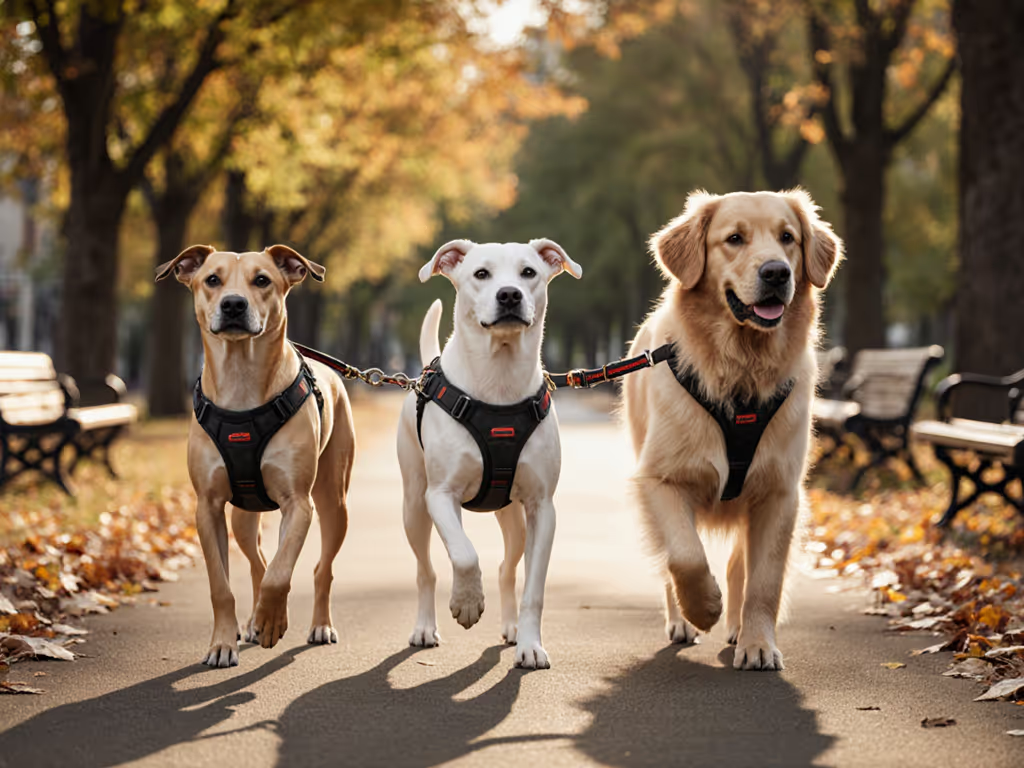
Best Training Leashes For Every Dog Body Type
Choose the right leash by your dog’s anatomy - not weight - with body-type-specific setups, precise fit checkpoints, and measurement tips that reduce injury risk and improve training control.
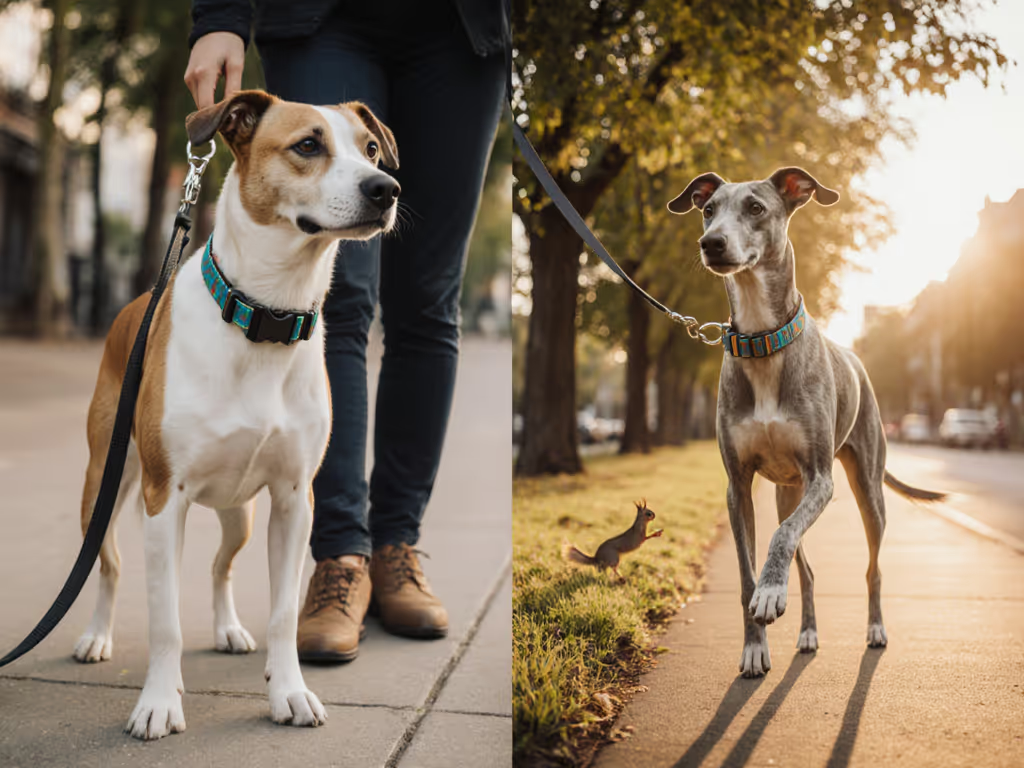
If you've ever felt that heart-dropping moment when your dog backs out of their collar (whether dashing toward a squirrel or simply wiggling free during a routine walk), you're not alone. Understanding the martingale vs flat collar debate isn't just about gear; it's about finding the best collar for escape artists that keeps your companion secure without compromising comfort or welfare. As someone who's helped hundreds of guardians through the emotional rollercoaster of escape attempts, I believe calm, consistent repetitions build the confidence both you and your dog need to navigate the world together.
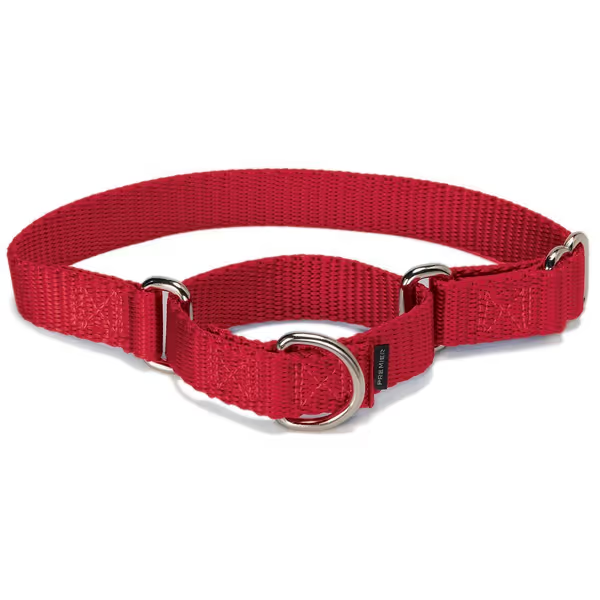
A collar isn't merely an accessory for ID tags. It is your primary communication tool during walks. When mismatched to your dog's anatomy or behavior, even the most well-intentioned choice can create dangerous situations. That's why I design stage-based training that begins with choosing the right foundation.
Flat collars (also known as quick-release collars) offer simplicity and are perfectly suited as a flat collar for daily wear for well-mannered dogs who don't pull significantly. They're straightforward, easy to adjust, and allow for quick identification. However, their single-loop design creates a critical vulnerability: dogs with narrow heads relative to their necks (like Greyhounds, Whippets, or even many terrier mixes) can easily slip out when they back away or lunge.
Martingale collars solve this specific problem with an ingenious dual-loop system. The larger loop fits comfortably around your dog's neck like a standard collar, while the smaller control loop tightens only when tension is applied to the leash. This creates secure containment without choking, a principle confirmed by veterinary behaviorists who note properly fitted martingales reduce neck strain compared to traditional slip collars.
The concept of collar pressure distribution is often overlooked but crucial for your dog's long-term well-being. When a dog pulls against a standard flat collar, all pressure concentrates on a small area of the neck, potentially straining sensitive structures like the trachea or cervical spine. This is particularly concerning for small breeds or dogs with pre-existing respiratory conditions.
Martingales distribute this pressure more evenly through their tightening mechanism, which is why they're frequently recommended as the best collar for escape artists who might experience sudden tension during walks. The gentle constriction activates only when needed, creating a clear communication channel without causing discomfort.
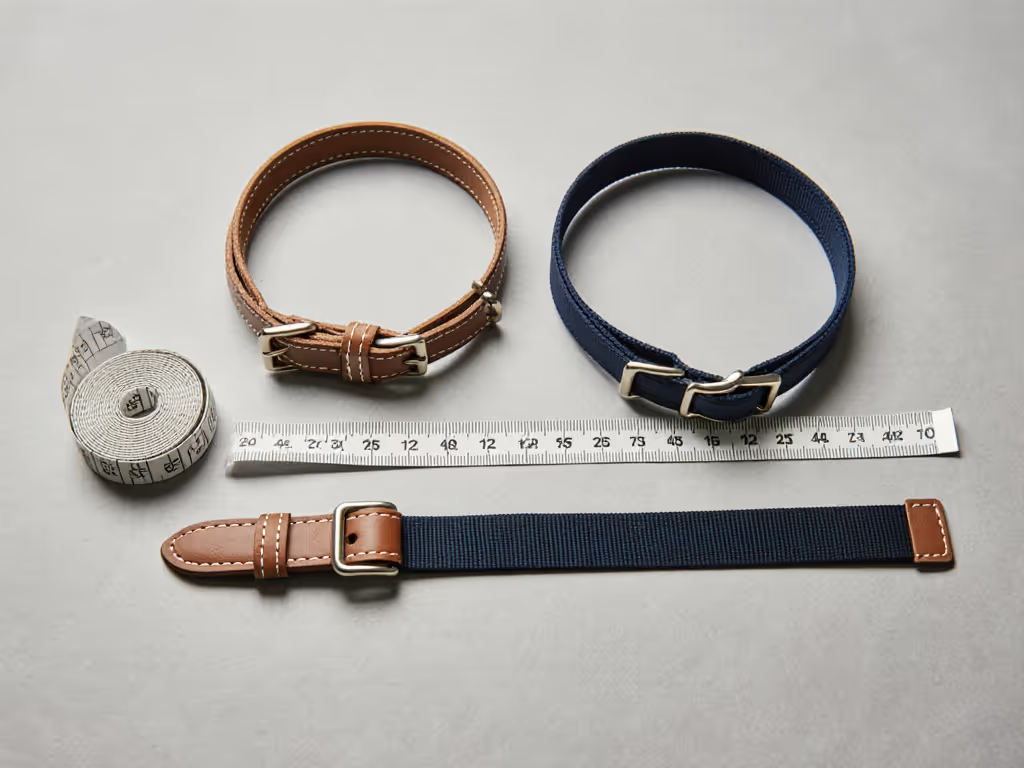
If your dog has mastered the art of backing out of collars, a martingale isn't just helpful, it is essential for safety. I've worked with countless guardians whose dogs had "disappeared" multiple times before discovering this simple solution. The dual-loop design prevents escape while maintaining welfare, making it the gold standard for dogs with narrow heads.
This brings us to sighthound collar needs (a category where martingales truly shine). Breeds like Greyhounds, Borzois, and Whippets often have necks wider than their heads, creating a natural escape route with standard collars. A properly fitted martingale closes that gap the moment tension appears, keeping your dog secure without constant vigilance.
Getting the martingale collar sizing right is non-negotiable. Too loose, and it won't engage properly when needed; too tight, and it defeats the purpose of gentle control. Here's my foolproof measurement method:
For a step-by-step fit check, see the two-finger rule collar fit guide.
"Small wins, stacked safely, build calm, confident teams."
${PRODUCT_IMAGE(B000JD1PUW)}
While martingales solve specific problems, flat collars remain the workhorse of daily wear for many dogs. If your companion:
...then a quality flat collar serves beautifully as a flat collar for daily wear. The Red Dingo Classic Collar, with its Bucklebone clip and stainless steel D-ring, provides exceptional durability for active lifestyles while maintaining comfort through its soft nylon construction.
The key differentiator isn't about which collar is "better" overall. It is about matching the tool to your specific situation. I've seen many guardians struggle because they've been sold on a one-size-fits-all approach, when what they really needed was guidance tailored to their dog's unique body and behavior.
Before choosing, answer these questions honestly:
Try each option for three days, focusing on:
Document your observations in a simple log. This creates objective data to inform your decision rather than emotional reactions after a single scare.
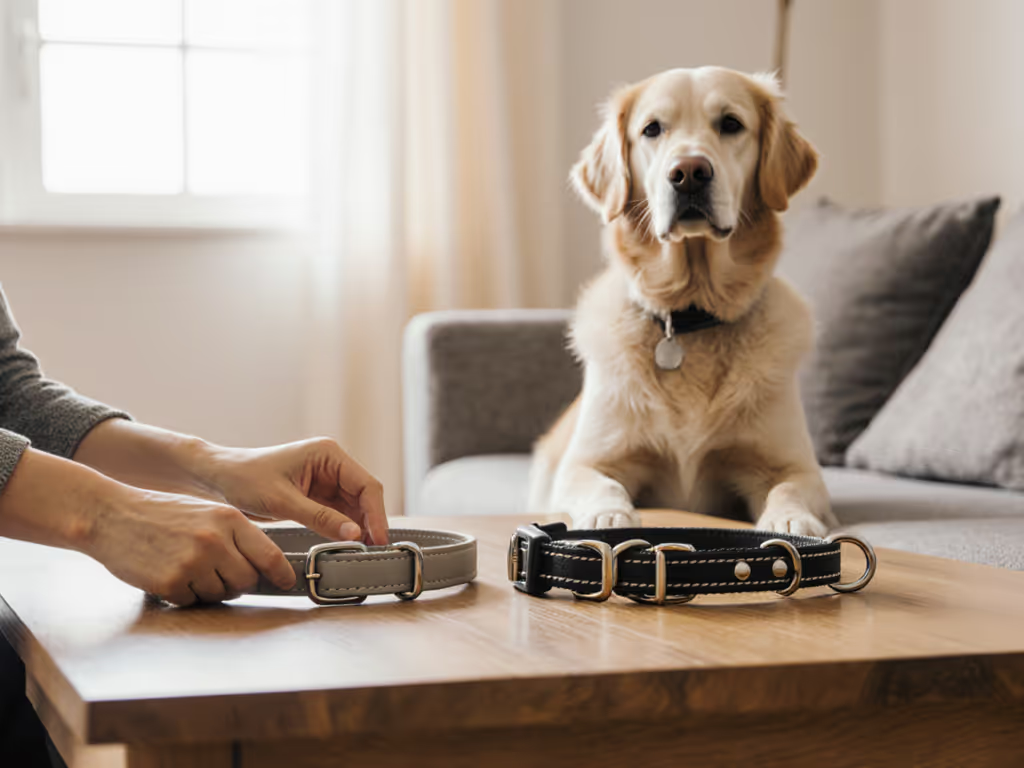
Remember that tiny apartment hallway where a guardian cried tears of relief after her dog completed a calm ten-step walk to the door? That transformation didn't happen overnight. It came through carefully staged practice using the right gear for the job.
Whether you choose a martingale or flat collar, success comes through structured progression:
Each stage should feel easy before progressing (a crucial element often missed in online advice). This is where many guardians rush, creating setbacks instead of progress.
Your physical stance communicates as much as your collar choice. When introducing any new collar:
These subtle handler posture cues create less stressful communication, making whatever collar you choose more effective.
Regardless of your choice, perform weekly safety checks:
Dogs grow, gain or lose weight, and their needs change. Your collar strategy should evolve with them. This is especially crucial for puppies moving through developmental stages.
Here's what I tell every guardian: no collar replaces consistent, positive training. The right collar simply creates the conditions for success while you build those essential skills. Short reps, long gains applies perfectly here. Small, frequent practice sessions with appropriate equipment yield far better results than occasional marathon training sessions.
This week, conduct my "Three-Day Collar Trial" with whatever options you have available:
Create a simple scorecard with these categories: security, comfort, ease of use, and your stress level. After three days, you'll have concrete evidence (not just anxiety) to guide your decision.
Remember, the goal isn't perfection on day one. It's about creating a foundation where both ends of the leash feel safe, heard, and connected. When you match the right collar to your dog's specific needs and support it with gentle, consistent training, those small wins begin stacking, creating the calm, confident walking partnership you've been dreaming of.

Choose the right leash by your dog’s anatomy - not weight - with body-type-specific setups, precise fit checkpoints, and measurement tips that reduce injury risk and improve training control.

Choose training gear by your dog’s anatomy, using practical measurement thresholds and fit checkpoints to prevent tracheal pressure and chafing. Get clear guidance on when to use a Y-harness, flat collar, or martingale - and how to adjust each - for humane, effective leash work.

A dog’s frame - not pulling style - should determine the choice of front, back, or dual-clip harness. Use quick measurements and breed-specific checkpoints to prevent chafing, protect gait, and match the right design to your dog.

Get evidence-backed guidance to choose and use a long line for recall: dial in the right length and material, pick safe hardware, and follow a week-by-week progression. Maintain your gear to maximize durability and real-world value over hundreds of walks.